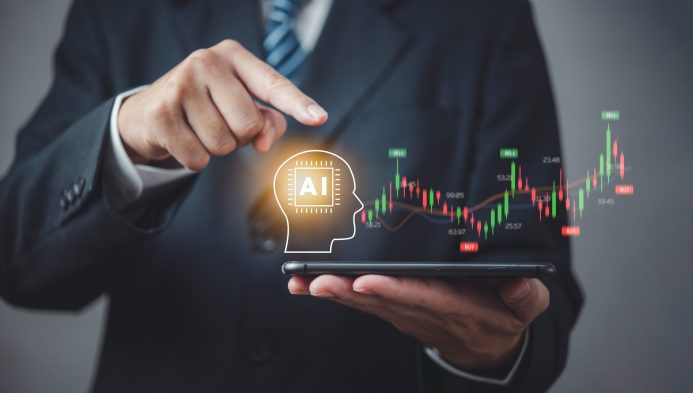AI in Industrial Design Market: Enhancing Design Processes with Intelligent Solutions
Introduction
Artificial Intelligence (AI) is revolutionizing the field of industrial design by automating complex processes, enhancing creativity, and improving product customization. AI technologies are utilized to streamline the design process, from conceptualization to the final stages of production. For instance, machine learning algorithms can predict consumer preferences and suggest design modifications, while generative design software uses AI to explore all possible permutations of a design solution, optimizing for materials, manufacturing methods, and cost constraints. This integration of AI not only speeds up the design cycle but also helps in creating more innovative and sustainable products.
Read also: AI in Retail Market: Enhancing Personalization and Efficiency in Retail
According to Market.us, The Global AI in Industrial Design Market is poised for substantial growth, with its value projected to reach approximately USD 38.3 billion by 2033. This represents a significant increase from its valuation of USD 3.7 billion in 2023. The market is expected to expand at a robust compound annual growth rate (CAGR) of 26.2% during the forecast period from 2024 to 2033.
The market for Artificial Intelligence (AI) in industrial design is growing rapidly, transforming how products are conceptualized, designed, and manufactured. AI’s integration into this field is primarily driven by the need for greater efficiency and innovation. By automating design processes and providing insights based on data, AI enables companies to create more sophisticated and personalized products faster than ever before. This not only reduces the time to market but also allows manufacturers to respond swiftly to changing consumer demands and preferences.
Read also @ AI in Industrial Design Market to Hit USD 38.3 billion by 2033
One of the major growth factors for AI in industrial design is the increasing pressure on manufacturers to produce more with less – less time, fewer resources, and lower costs. AI tools help meet these demands by optimizing design processes and improving resource management through smarter material usage and waste reduction. Additionally, the rise of smart manufacturing and the Internet of Things (IoT) technologies are pushing companies to adopt AI solutions to stay competitive in a digitally evolving landscape.
However, the adoption of AI in industrial design also comes with its set of challenges. The cost of implementing cutting-edge AI technology can be prohibitively high, particularly for smaller firms. There is also the challenge of technical complexity, as integrating AI into existing systems requires specialized skills and knowledge. Moreover, concerns around data privacy and the ethical use of AI continue to be significant hurdles.
Despite these challenges, the opportunities AI presents in the industrial design sector are immense. For one, AI can drive innovation in product development, leading to the creation of novel and more effective design solutions. It also opens up new avenues for customization, allowing products to be tailored to individual preferences at a scale not previously possible. Furthermore, as AI technology continues to advance, it is expected to become more accessible and cost-effective, which could democratize high-level design capabilities and potentially reshape the competitive landscape of the industry.
Key Takeaways
- Market Projections: The AI in the Industrial Design sector is poised for substantial growth, anticipated to achieve a market size of USD 38.3 Billion by 2033. This represents a compound annual growth rate (CAGR) of 26.2% during the forecast period.
- Software Dominance: In 2023, the Software category maintained a leading position in the AI in Industrial Design market, capturing 72.7% of the total market share.
- Cloud-Based Implementation: The Cloud-Based solutions continued to exert a strong presence in 2023, comprising 67.6% of the market share.
- Automotive Sector Influence: The Automotive segment significantly influenced the market in 2023, contributing to 33.7% of the market share.
- Regional Leadership: The Asia-Pacific region led the market in 2023, securing a significant market share of 34.7%, propelled by the presence of key technology firms and extensive investments in research and development.
AI in Industrial Design Statistics
- Projected Market Size: The Artificial Intelligence Market is set to expand from USD 177 billion in 2023 to approximately USD 2,745 billion by 2032, marking a Compound Annual Growth Rate (CAGR) of 36.8% from 2024 to 2033.
- Growth in Industrial Design: The Industrial Design Market is anticipated to grow from USD 48.72 billion in 2023 to around USD 77.86 billion by 2033, with a CAGR of 4.8% during the forecast period from 2024 to 2033.
- AI Integration in Industry: Approximately 30% of industrial companies are currently evaluating or integrating AI into their operations as part of digital transformation initiatives.
- AI in Manufacturing: The market for AI in manufacturing is expected to reach about USD 17 billion by 2025, with AI software revenue in industrial applications projected to hit USD 10.4 billion.
- AI Adoption and Productivity: The global manufacturing industry is projected to achieve an AI adoption rate of 28% by 2025, potentially boosting productivity by up to 20%.
- Cost Savings through AI: The implementation of industrial AI could result in annual savings of approximately USD 500 billion for manufacturers via predictive maintenance.
- AI-Driven Automation: 40% of manufacturing firms plan to implement AI-driven process automation within the next five years.
- Investment in AI for Supply Chains: By 2024, 50% of manufacturing supply chains are expected to have invested in AI technology.
- Economic Impact of Industrial AI: By 2030, AI in the industrial sector is projected to contribute an impressive USD 15.7 trillion to global economic growth.
- Impact of Smart Factories: 92% of senior manufacturing executives believe that Smart Factories will significantly enhance productivity and improve supply chain satisfaction.
Emerging Trends in AI in Industrial Design Market
- Model Optimization and Efficiency: The trend is shifting towards more compact and efficient AI models, which reduces the cost and complexity of implementation, making advanced AI more accessible to smaller players in the industry.
- Generative Design: AI is being increasingly used to generate novel designs and solutions, particularly in industries like automotive and aerospace, where it can produce optimized designs with improved material utilization and performance.
- Integration of AI with Legacy Systems: More companies are finding ways to integrate AI with existing systems to enhance decision-making and operational efficiency without complete overhauls.
- Customization Using Local Data Models: Businesses are moving towards developing bespoke AI models that use their proprietary data, enhancing their ability to offer tailored solutions and maintain data privacy.
- Advanced Virtual Agents: AI is being used to create more sophisticated virtual agents that can handle complex interactions beyond basic customer service, expanding their utility across various business functions.
Top Use Cases for AI in Industrial Design
- Automated Design and R&D: AI streamlines the design process by quickly generating multiple design alternatives based on predefined criteria, significantly shortening development cycles.
- Quality Control: AI-driven systems are used for visual inspections in manufacturing, enhancing the detection of defects and reducing dependency on human quality control staff.
- Smart Assistants in Manufacturing: These AI systems provide real-time insights and operational guidance without the need for complex interfaces, improving accessibility and responsiveness.
- Data Management: AI enhances the handling of large volumes of data across systems, improving the speed and accuracy of data-driven decisions.
- Resource Exploration: In industries like mining and oil & gas, AI aids in analyzing vast amounts of geospatial data to pinpoint extraction sites, increasing efficiency and reducing environmental impact.
Major Challenges in the Market
- High Implementation Costs: Despite advancements, the initial cost and complexity of implementing cutting-edge AI solutions remain significant, especially for smaller enterprises.
- Skills Gap: There is a notable deficit in AI-related skills, which impedes the ability of companies to fully utilize AI technologies.
- Data Management Issues: Poor data quality and integration challenges limit the effectiveness of AI applications in complex industrial environments.
- Ethical and Privacy Concerns: As AI takes on more critical roles in design and manufacturing, issues around data privacy, security, and ethical use become increasingly prominent.
- Integration with Legacy Systems: Many businesses struggle to integrate new AI technologies with old systems, which can disrupt existing operations and require substantial investment to resolve.
Market Opportunities
- Lowered Barriers to Entry: Improvements in AI technology are reducing costs and technical barriers, making it more accessible for a broader range of businesses.
- Enhanced Customization Capabilities: AI enables companies to offer highly customized products and services, meeting specific customer needs more effectively.
- Sustainability: AI can significantly contribute to sustainability in industrial design by optimizing material use and reducing waste.
- Expansion into New Markets: As AI capabilities expand, businesses can enter new markets and offer innovative solutions previously not feasible.
- Operational Efficiency: AI’s ability to streamline various aspects of design and production processes can significantly enhance operational efficiency and competitiveness.
Conclusion
In conclusion, AI has become an invaluable tool in the realm of industrial design, empowering designers to create innovative products, optimize designs, and streamline the collaboration between design and manufacturing teams. The market for AI in industrial design is poised for continuous growth, as businesses recognize the immense value that AI brings to the design process and its potential to drive competitive advantage.





Leave a Reply